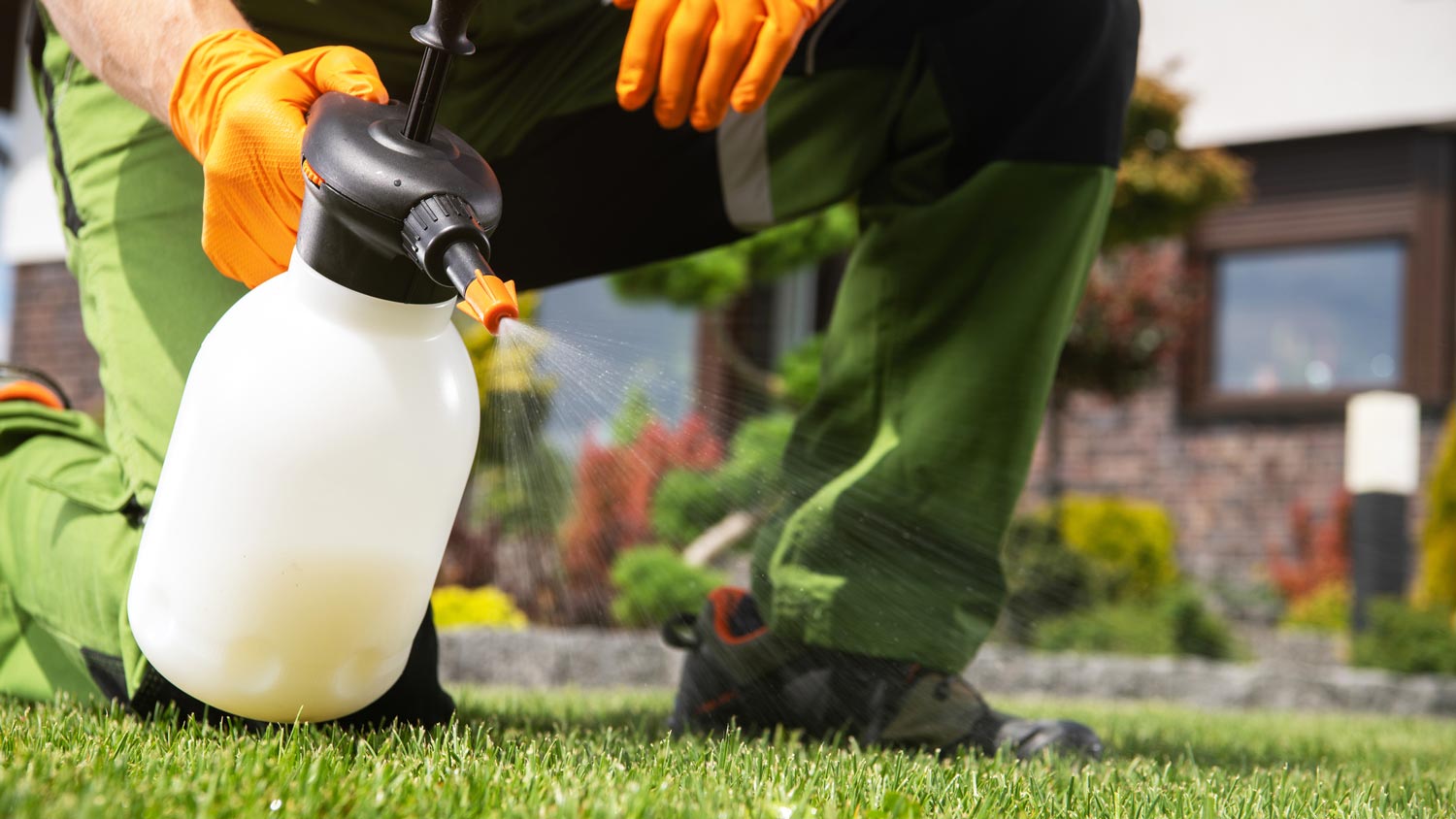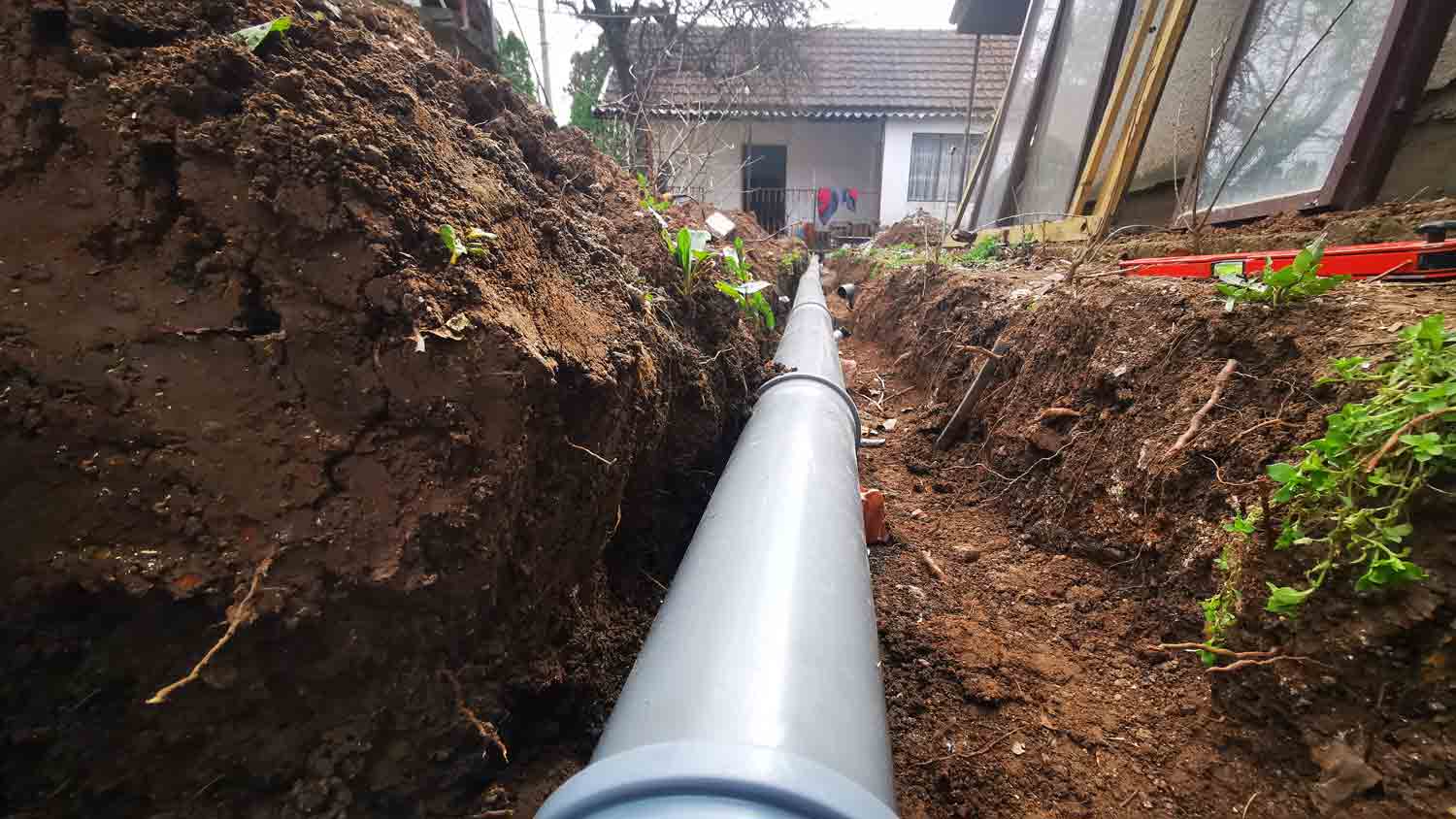
Ivy might look pretty, but you probably don’t want it in your garden. Learn how much it’ll cost to remove ivy by type, treatment method, and more.
Some plants overstay their welcome, even after you've shown them the door


Bermuda grass comes in many varieties that flourish in zones 7 to 10.
Turfgrass spreads quickly, making it difficult to control and remove.
There are manual and chemical methods for removing Bermuda grass.
It may take several passes to fully remove new Bermuda grassroots.
While we spend most of the time trying to keep our grass healthy—sometimes stubborn, unruly, and invasive grass just needs to go. Bermuda grass is a popular warm-season grass variety that is resilient enough to stand up against significant drought, traffic, and even weeds.
But when Bermuda grass overstays its welcome—or welcomes itself where it's not wanted—it's time to remove it before it spreads beyond control.
Bermuda grass—aka Cynodon dactylon, couch grass, and even devil’s grass—has 50 varieties. Known for its impressively tough qualities, landscapers and homeowners choose Bermuda grass everywhere from high-traffic lawns to baseball fields. The grass does best in warmer hardiness zones of the U.S —think the southeastern states to southern Cali.
But the very qualities that we celebrate in many common types of Bermuda grass are also what makes them frustratingly invasive. Bermuda grass is a lateral spreader. It spreads both upwards and outwards in all directions by producing rhizomes—essentially underground stems. Above ground, you'll find seeding stolons that pop up just a week after mowing and spread seeds far and wide.
Bermuda grass crosses into weed territory when it travels too far—into gardens, under pavers, and into your neighbor's lawn. And if you suddenly decide Bermuda grass is not for you, getting rid of it takes some dedication.
In addition to its stubbornness, why would someone want to get rid of Bermuda grass in their lawn? It turns out that this go-to option can be a bit of a contradiction. While we know it for its resiliency in hot and dry areas, it does require maintenance and special conditions to thrive.
Here are some common reasons homeowners ditch Bermuda grass:
It goes dormant in the winter after just a few cold days and turns yellow or brown.
Shade can cause the grass to weaken or die.
Its rapid rate of growth requires more frequent mowing.
A healthy lawn requires more frequent fertilization since Bermuda grass uses up nutrients quickly.
Rogue patches can overwhelm flower gardens, walkways, and patios.
Removing any type of grass from your lawn can take a bit of time. After all, we plant turfgrass because of its ability to dig in its roots and create a lush lawn no matter what the weather brings. Bermuda grass can be particularly persistent, so let's dive in.
Solarization is an herbicide-free way to kill turfgrass if your lawn gets constant sunlight. Place a clear, thick plastic tarp over the area you want to kill and weigh it down with spikes or bricks.
After two to four weeks—or whenever the turf dries and dies—remove the tarp and rake the grass up with a thatch rake or a sod cutter. The area must remain in direct sunlight during the process to be successful.

Removing Bermuda grass without any pre-treatment may be the most labor-intensive method, but is possible in a hurry. Rent a sod cutter and set the blades to their lowest setting to get through the grass rhizomes. Be sure to use proper safety equipment and mark the irrigation system on your lawn before proceeding.
Note that this process removes the nutrient-rich topsoil as well, and may not cut all the way below the Bermuda grass roots, so you may need to remove the remaining roots by hand.
You can also manually remove smaller patches of Bermuda grass after a light rain. Dig the moistened soil up with a sharp spade, making sure to get below the rhizomes. Separate the roots from the soil to keep as many nutrients intact as possible.
Sheet mulching is yet another long-game tactic to remove grass from your lawn. Similar to solarization, it cuts the grass off from sun and nutrients. Cover your Bermuda grass with landscape fabric, cardboard, or several layers of non-glossy newspaper and top it all over with several inches of mulch.
It will take several months to decompose the grass, but you're less likely to damage the topsoil or let the Bermuda grass seeds spread during this time.
Grass-selective and nonselective herbicides for Bermuda grass are quicker options for removing overgrowth, but should always be used with caution. The EPA determined that glyphosate—the most common nonselective herbicide—posed a potential risk and low toxicity to some plant life, pollinators, and animals.
For best results, apply grass-selective herbicides in the spring according to the instructions on your container and repeat throughout the season until the full plant dies out. Nonselective herbicides do best on Bermuda grass at their peak growth stage in the summer.
In both cases, cultivate the ground after you fully complete the treatment to ensure there are no remaining rhizomes.

Combine a solution of vinegar and dish soap—1 gallon of white vinegar and 1 tablespoon of dish soap—specifically to the Bermuda grass stolons. The vinegar will dry up and kill the plants. Keep in mind that while this is an organic Bermuda grass killer, it kills anything else it touches as well.
Just like the other herbicides, complete treatment until the full plant dies out and you can remove the full rhizomes from the ground.
Even though Bermuda grass has a reputation for drought resistance, it can still die when deprived of water or fertilizer for long enough. The best way to expose the full plant to the elements without support is through cultivation.
Use a tiller, rake, or sharp shovel to dig at least 6 inches into the surface of your grass and turn over the turf. The process exposes both the stolons and the roots to the sun, causing it to dry up and die quicker than when safe underground.
After several weeks, remove all dead materials and repeat the process for the remaining rhizomes.
Bermuda grass lawns require keeping a sharp eye on the situation to keep the persistent plant from spreading.
Here are some tips to keep it under control:
Remove the full plant—rhizomes and all—from gardens and hardscapes ASAP.
Mow your lawn at least once a week during the high season.
Consider removal treatments when Bermuda grass spreads beyond the desired area.
Discourage deep root growth with less water or by adding shade to a problem area.
Surround nearby gardens and ornamental grasses with mulch to discourage spreading.
Bermuda grass may act like it has a mind of its own, even after you've spent months trying to get rid of it. The best way to control it is to build an ongoing plan with a professional. Reach out to a lawn care pro near you for assistance and tailored recommendations.
From average costs to expert advice, get all the answers you need to get your job done.

Ivy might look pretty, but you probably don’t want it in your garden. Learn how much it’ll cost to remove ivy by type, treatment method, and more.

Looking to step up your golf game without leaving your property? This guide details backyard putting green costs to help you decide if this project is worth it.

The cost to remove a boulder depends on the size, location, and equipment needed. Learn the average boulder removal cost and how to save money on removal.

Hiring a pro isn’t necessary when removing holly bushes. This guide can help you make quick work of the holly bush removal process.

There are reasons to grade or slope your yard beyond aesthetics—drainage is the main one. Read on and learn how to have an informed discussion with your pro.

Keep your yard from flooding by choosing the right piping and drainage. Learn what type of piping is used for the drainage system in a yard with this guide.